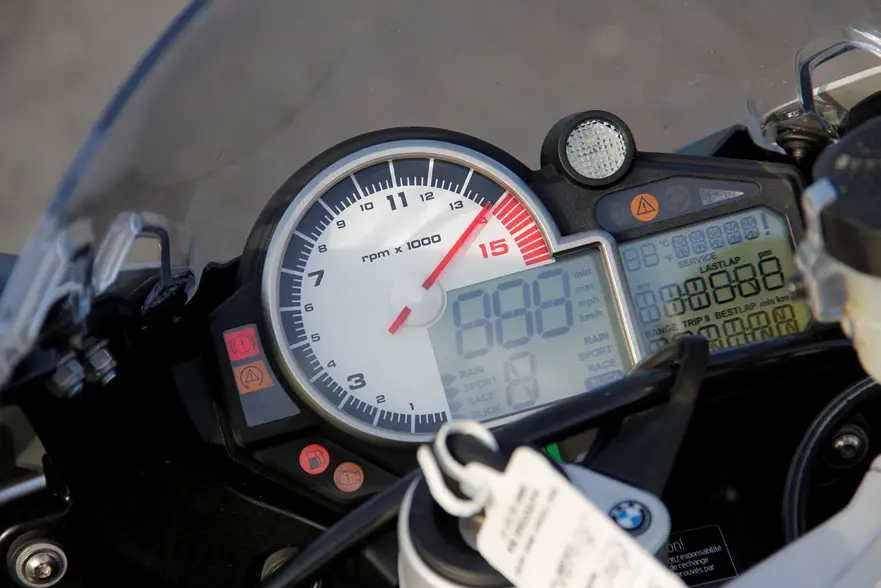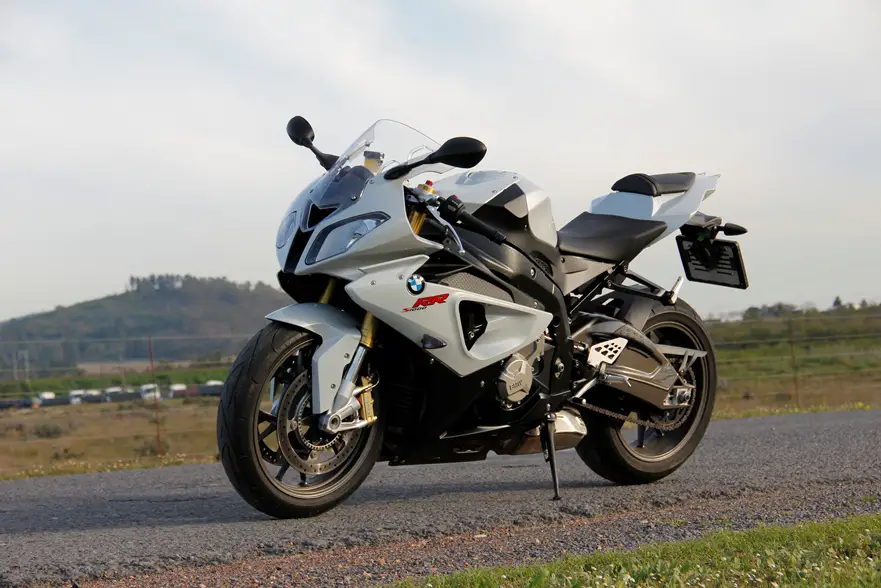Most motorcycles, even single cylinder bikers, rev higher than the average car. Sports bikes can rev even higher than Formula 1 race cars. Why do motorcycle engines rev so high and how do they do it without blowing up?
Motorcycle engines rev higher due to having smaller, over-square pistons with a wider bore and shorter stroke. Small engines develop less torque and therefore need to rev higher to develop enough power. Over-square pistons will rev higher than pistons with a long stroke at a given piston speed.
There are many reasons why motorcycles need to, and are able to, rev higher than cars. I did some research and here is what I’ve found. I will try to explain it in simple terms.
Small Engines Require Higher RPMs
Let’s look at why motorcycles need to rev higher, before looking at how they do it without falling apart.
Motorcycles are much smaller than cars and need to be light in order for the rider to control it. There is also not a lot of space for big engines. This means that motorcycles has to make due with much smaller capacity engines than cars.
Small engines deliver lower torque. Horsepower is a function of torque and engine speed (rpm or revs). More of either torque or rpms, equals more power. Big pistons with a long stroke suck in more air and deliver more torque. Small pistons develop less torque.
Sports bikes (the quickest ones) generally have four small cylinders instead of two big ones like the slower V-twins. With more, light-weight, small pistons, these four-cylinder engines can rev much higher than a twin-cylinder with the same overall capacity.
In order to produce more power from a small piston with a shorter stroke, you need to move it faster in order to suck in more air. More air equals more more fuel that can be burnt per minute to generate more horsepower.

In short, without big pistons, small motorcycle engines need to rev higher to develop enough power to go fast. Cruiser motorcycles, like Harley Davidsons, have air-cooled push-rod engines that cannot rev very high due to their design. These engines need to develop a lot of torque to compensate for the lack of rpms. That’s why they often have very large displacement (as big as 114 cubic inches or 1 868 cc) engines.
See this post for more detail on why cruisers are so slow and underpowered.
One of the bikes with the highest engine rpms of all times is the 1990 Honda CBR 250 RR (MC22) that redlines at a whopping 19 000 rpm.
Over-Square Pistons Make Bikes Rev Higher
In order to get more power from the same amount of torque, an engine needs to rev higher. To make a motorcycle engine rev higher, over-square pistons are used. Over-square means the bore diameter (how wide the piston is) is more than the stroke length (how far the piston moves up and down).
An engine with over-square pistons can rev higher since the piston speed (how fast it actually travels up and down inside the cylinder) and acceleration are lower for a given rpm. Likewise, for a given piston speed, the revs are higher with over-square pistons than with long-stroke pistons.
Just look at sports bikes. The BMW S 1000 RR has a bore of 80 mm and a stroke of only 49.7 mm (massively over-square), and it redlines at a screaming 14 200 rpm.

Bikes with longer strokes (like Harleys and other big cruisers) rev much lower. The Harley Davidson 114 Fat Boy, for instance, has a bore of 100 mm and a stroke of 111 mm (i.e. under-square) and it only revs to around 6 000 rpm.
The same applied to cars. Diesel trucks have a long stroke with a high piston speed to aid compression to ignite the diesel-air mix without a spark. My old 1977 Toyota Land Cruiser HJ45 diesel for instance, has a bore of 88 mm and a stroke of 98 mm. My Land Cruiser delivers massive amounts of torque at very low rpms and I’d be surprised if the redline on my cruiser is higher than 4 000 rpm.
The wider bore pistons usually have more valves (at least four) that are bigger than on narrow pistons. This allows more air and gas flow which produces more power.
High Revs and Component Design
Motorcycles have lighter internal engine components (like the crank) in order to rev higher. Due to the high engine rpms, motorcycle engines don’t last as long as car engines. This is usually not a big concern since the average motorcycle does less annual mileage than the average car. That doesn’t mean some riders do not put insanely high mileage on their bikes with proper maintenance.
Modern electronic fuel injection (EFI) allows for straight vertical inlets and therefore more efficient air-fuel delivery to the combustion chamber at higher revs.
Due to the high engine speeds, valves need to open and close quicker at exactly the right intervals. To achieve this, there is less valve movement and stiffer valve springs. Otherwise, valve float (where the valves open and close at different times to the cylinder reaching top-dead-center) may become an issue due to too high rpms.
Motorcycle engines are actually less efficient than cars with similar engine capacities. The light weigh of motorcycles that make up for this, however.
Conclusion
Motorcycles rev higher than cars due to everything inside the engine being smaller and lighter. They also need to rev higher to develop enough power from such small engines. Low torque requires high engine speeds to develop more horsepower.
To achieve these higher engine speeds (rpms), over-square pistons are used in most motorcycles that are designed for speed, where pistons are wider than their stroke length.
And all of the above results in motorcycles sounding so much better than cars.
